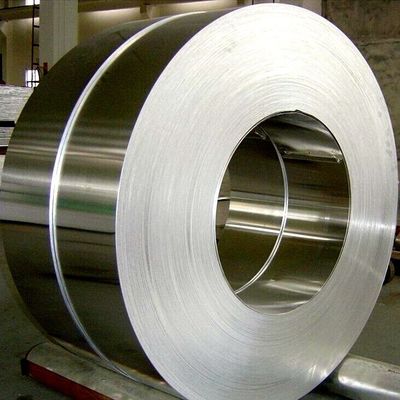-
Titanium Pipe Fittings
-
Titanium Welded Pipe
-
Titanium Pipe Flange
-
Seamless Titanium Tubing
-
Titanium Heat Exchanger
-
Titanium Coil Tubing
-
Titanium Alloy Sheet
-
Titanium Fasteners
-
Titanium Welding Wire
-
Titanium Round Bar
-
Titanium Forgings
-
Titanium Clad Copper
-
Titanium Electrode
-
Metal Sputtering Target
-
Zirconium Products
-
Sintered Porous Filter
-
Shape Memory Nitinol Wire
-
Niobium Products
-
Tungsten Products
-
Molybdenum Products
-
Tantalum Products
-
Equipment Products
-
Aluminum Products
-
Stainless Steel Products
GR1 GR2 Titanium Strip ASTM B265 thickness 0.01 above for Electrolysis Industry

Contact me for free samples and coupons.
Whatsapp:0086 18588475571
Wechat: 0086 18588475571
Skype: sales10@aixton.com
If you have any concern, we provide 24-hour online help.
x| Plate Surface | Pickling And Smooth Surface | Weight Fomula | T*W*L*4.51/1000000=Kg |
|---|---|---|---|
| Applications | Electrolysis Industry | Strip Surface | Cold Rolling Bright Surface |
| Surface Process | Acid Wash, Sand Blasting, Polished | Foil Thickness | 0.01mm Above |
| Others Stndard | ASTM B265 | Advantage | Durability Stability And Lower Weight |
| Highlight | GR1 GR2 Titanium Strip,Electrolysis Industry Titanium Strip,ASTM B265 Titanium Strip |
||
GR1 GR2 Titanium Strip ASTM B265 thickness 0.01 above for Electrolysis Industry
What Is Titanium Strip?
Titanium strips are available in two main grades: Gr1 and Gr2. The pure titanium strip typically comes in standard dimensions, with a thickness ranging from 0.4mm to 8mm and a width spanning from 1000mm to 2000mm. The Gr2 titanium strip offers flexibility, as it can be cut and flattened to meet specific customer requirements.
These titanium strips are known for their low density, which is 4.51KG/m^3, and high melting point of 1660°C. They exhibit robust resistance to corrosion, possess high specific strength, and demonstrate good plasticity. The manufacturing process for the Gr2 titanium strip involves hot rolling or cold rolling followed by vacuum annealing. The standard delivery state for these titanium strips is M titanium, which refers to the annealed condition of the material.
Production standard is ASTM B265 and HS code is 8108903290
Titanium Strip Specification:
Size(mm):
thinkness:0.01-0.02*width:30-1160*length
thinkness:0.03-0.1*width:50-400*length
thickness:0.1-0.8*width:3-1000*length
thickness:0.8~1.0*width:1000~2000*length
Titanium Strip Chemical Composition
| Grade | ELEMENT COMPOSITION,% | ||||||||
| Ti | Al | V | Fe | C | N | H | O | Other, Max | |
| Grade 1 | Balance | _ | _ | 0.20 | 0.8 | 0.03 | 0.015 | 0.18 | 0.40 |
| Grade 2 | Balance | _ | _ | 0.30 | 0.8 | 0.03 | 0.015 | 0.25 | 0.40 |
| Grade 5 | Balance | 5.5-6.75 | 3.5-4.5 | 0.40 | 0.8 | 0.05 | 0.015 | 0.20 | 0.40 |
| Grade 7 | Balance | Pd 0.12-0.25 | _ | 0.03 | 0.8 | 0.03 | 0.015 | 0.25 | 0.40 |
| Grade 9 | Balance | 2.5-3.5 | 2.0-3.0 | 0.25 | 0.8 | 0.03 | 0.015 | 0.15 | 0.40 |
| Grade 12 | Balance | Mn 0.2-0.4 | Ni 0.6-0.9 | 0.30 | 0.8 | 0.03 | 0.015 | 0.25 | 0.40 |
Titanium Strip Mechanical Properties
| Grade | Tensile Strength(min) | Yield Strength(min) | Elongation(%) | ||
| Ksi | Mpa | Ksi | Mpa | ||
| Gr1 | 35 | 240 | 20 | 138 | 24 |
| Gr2 | 50 | 345 | 40 | 275 | 20 |
| Gr3 | 65 | 450 | 55 | 380 | 18 |
| Gr5 | 130 | 895 | 120 | 828 | 10 |
| Gr7 | 50 | 345 | 40 | 275 | 20 |
| Gr9 | 90 | 620 | 70 | 438 | 15 |
| Gr12 | 70 | 438 | 50 | 345 | 18 |
Titanium Strip Application
Titanium strips are extensively utilized across various industrial sectors, finding application in electrolysis as electrodes, power stations; condensers, heaters for oil refining and desalination processes, and devices aimed at environmental pollution control. The versatility of titanium strips also makes them suitable for use in fuel and oxidant storage tanks, as well as high-pressure containers.
In manufacturing, pure and alloy titanium strips can be crafted into components for firearms such as automatic rifles, seat plates for demolition guns, and launch tubes for recoilless guns. The alloy variety of titanium strip is even processed into golf club heads, reflecting its diverse range of uses.
With my country's economy surging ahead rapidly, particularly with ambitious large aircraft projects and the dynamic development of coastal power stations, there has been a surge in demand for Gr2 titanium strip.
The advantages of titanium strips include their impressive plasticity, formability, weldability, and the ability to operate at high temperatures up to 300°C. They are predominantly employed as corrosion-resistant materials for mechanisms such as pressure vessels and pump valves.
Additionally, they see widespread use in seawater desalination, the petroleum industry, chemical industry, mechanical equipment, electrical apparatuses, automotive and motorcycle parts, sporting and leisure equipment, medical components, steel and metallurgy, and other cutting-edge industries.






